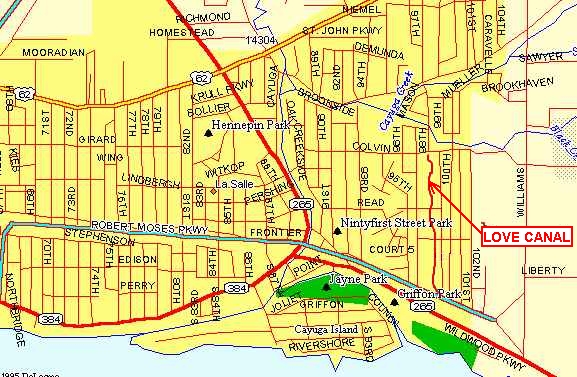

Since one possible mode of exposure to Love Canal chemicals involved migration of chemicals through surface soil, considerable attention was focused on local water drainage patterns. Of special interest were natural drainways, or swales, transecting the Love Canal area, especially east of the Canal, and connecting with creeks to the north. Although these swales were filled and leveled as housing developed east of the Canal, the possibility was raised that those channels could still have provided an easy path for chemicals or chemical-laden water to flow from the Canal. Epidemiologic and toxicologic studies took special note of houses built along the course of these swales (so called "wet" areas).